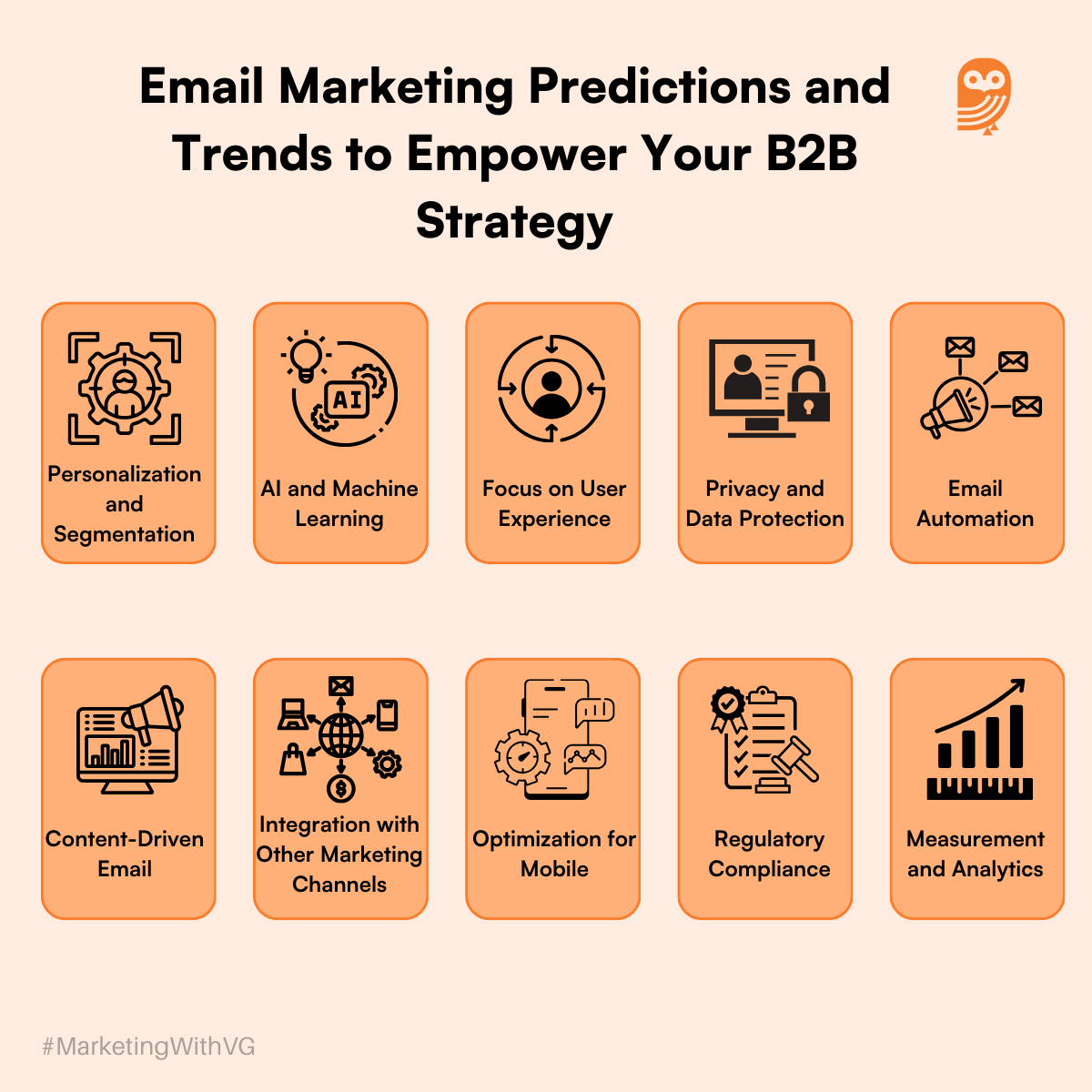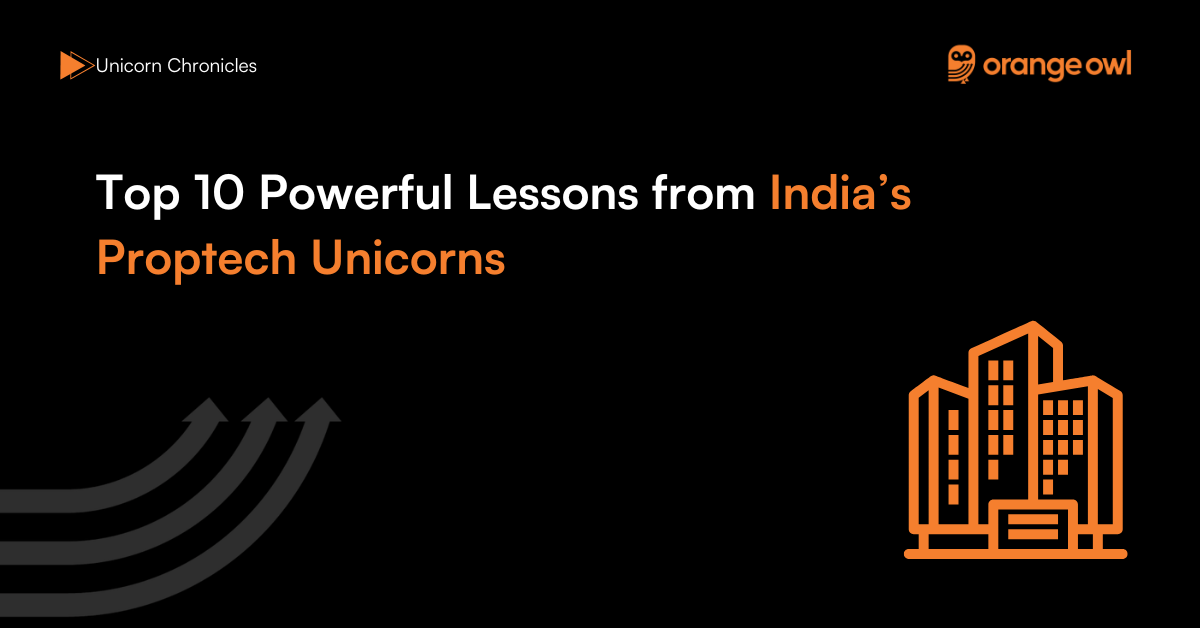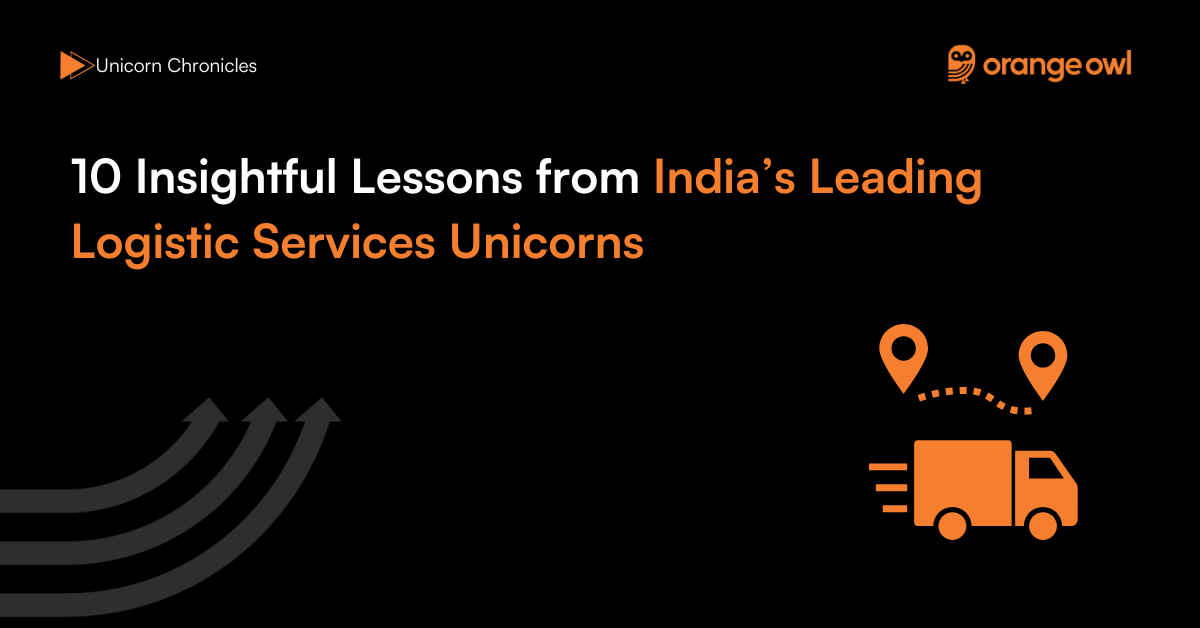Top 10 Email Marketing Predictions and Trends to Empower Your B2B Strategy in 2025
Vivek Goel
June 26, 2025

Table of Contents
Introduction:
As 2025 approaches, email marketing remains a staple in the B2B marketer’s toolkit, but the strategies behind it are evolving rapidly. With advancements in technology, changes in regulatory landscapes, and shifts in user expectations, understanding the future direction of email marketing is crucial for B2B marketers. This blog post explores the top ten trends and predictions for email marketing in B2B for 2025, offering actionable insights and strategies to effectively leverage this channel.
Top 10 Trends and Predictions of Email Marketing for Successful B2B Business:
Email Marketing Predictions 1: Increased Personalization and Segmentation
Insight: Personalization will move beyond first names to include content tailored to the user’s behaviour, industry, and specific stages in the customer journey.
Actionable Steps:
- Use advanced segmentation based on user activity, transaction history, and engagement levels.
- Implement dynamic content that changes based on the user’s past interactions with your brand.
Example: A B2B software company could send different email content to users who have opened the last five emails versus those who have not opened an email in the past month.
Email Marketing Predictions 2: Integration of AI and Machine Learning
Insight: AI will continue to enhance email marketing through automated content generation, optimized send times, and predictive analytics.
Actionable Steps:
- Employ AI tools to determine the optimal times to send emails to increase open rates.
- Use predictive analytics to forecast customer behaviours and tailor emails accordingly.
Example: A B2B financial services firm might use AI to predict which clients need additional resources on financial planning at year-end and target them with specific content.
Email Marketing Predictions 3: Enhanced Focus on User Experience
Insight: The user experience within emails will become more interactive, utilizing elements traditionally seen on websites, such as hover effects, interactive forms, and embedded videos.
Actionable Steps:
- Design emails to be an extension of your website experience with similar interactive elements.
- Ensure emails are responsive and visually appealing on all devices.
Example: A B2B retailer could include an interactive product gallery within emails that allows recipients to view different product options directly within the email.
Email Marketing Predictions 4: Privacy and Data Protection
Insight: With increasing scrutiny on data privacy, transparent and secure email practices will be paramount.
Actionable Steps:
- Be transparent about how subscriber data is used and provide easy options for users to control their privacy settings.
- Ensure compliance with global data protection regulations like GDPR and CCPA.
Example: A B2B healthcare company must ensure that all email communications comply with HIPAA and other relevant regulations, using secure methods to handle sensitive information.
Email Marketing Predictions 5: Rise of Email Automation
Insight: Automated email campaigns based on triggers and user actions will become more refined, allowing for timely and relevant communications without manual intervention.
Actionable Steps:
- Set up automated email sequences for various actions, such as onboarding, post-purchase follow-ups, and re-engagement.
- Continuously analyze and adjust the triggers and content of automated emails to optimize effectiveness.
Example: A B2B SaaS company might implement an automated email sequence that starts when a user signs up for a free trial, with personalized follow-ups based on how actively the user engages with the software.
Email Marketing Predictions 6: Content-Driven Email Strategies
Insight: Content will remain king in email marketing, with a shift towards providing real value through high-quality, informative content rather than just promotional messages.
Actionable Steps:
- Develop a content calendar specifically for email marketing that addresses the interests and needs of your audience.
- Include thought leadership pieces, industry insights, and helpful resources that position your brand as an authority.
Example: A B2B consulting firm could send monthly newsletters featuring industry trends, case studies, and expert advice to help clients navigate complex challenges.
Email Marketing Predictions 7: Integration with Other Marketing Channels
Insight: Email will not operate in isolation but as part of a cohesive multichannel strategy, integrating with social media, blogs, and other digital touchpoints.
Actionable Steps:
- Ensure consistent messaging across all channels.
- Use insights from social media and web analytics to inform your email content strategy.
Example: A B2B manufacturing company could use email to direct subscribers to a webinar hosted on their site, with additional discussions taking place on their LinkedIn page.
Email Marketing Predictions 8: Optimization for Mobile
Insight: With the increasing use of mobile devices to read emails, mobile-first design will become essential.
Actionable Steps:
- Design emails with mobile users in mind, considering factors like load times, layout, and ease of interaction.
- Prioritize concise content and large, easy-to-click buttons.
Example: A B2B marketing agency might redesign its email templates with larger fonts, mobile-friendly layouts, and touch-friendly buttons to improve readability and engagement on mobile devices.
Email Marketing Predictions 9: Regulatory Compliance
Insight: As email marketing regulations continue to evolve, staying compliant will be critical to avoid penalties and maintain trust.
Actionable Steps:
- Stay updated on email marketing laws and best practices.
- Regularly review and update your email practices and subscriber lists for compliance.
Example: A B2B legal services provider should ensure that all email marketing practices comply with the latest legal standards, providing necessary opt-out mechanisms and maintaining proper consent records.
Email Marketing Predictions 10: Measurement and Analytics
Insight: Advanced measurement techniques and deeper analytics will allow marketers to track the effectiveness of email campaigns beyond opens and clicks.
Actionable Steps:
- Implement advanced tracking that measures conversion rates, email contribution to revenue, and customer engagement.
- Regularly test different aspects of your email campaigns (A/B testing) to optimize performance based on analytics.
Example: A B2B electronics distributor could track how email campaigns contribute to sales by monitoring the customer journey from email links through to purchase.
Conclusion
For B2B marketers, 2025 will bring both challenges and opportunities in email marketing. By anticipating these trends and strategically integrating new technologies and approaches, you can enhance the effectiveness of your campaigns, ensuring that email remains a vital part of your B2B marketing arsenal.
Frequently Asked Questions (FAQs) for Top B2B Email Marketing Predictions and Trends
The frequency depends on your audience and objectives. Typically, sending 1–2 targeted emails per week ensures consistent engagement without overwhelming recipients. Use A/B testing to determine what frequency works best for your audience.
Subject lines should be concise (40–60 characters), convey value, and include action-oriented or curiosity-piquing language. Avoid spammy phrases and test personalization where appropriate.
Offer gated content like whitepapers, webinars, or free trials. Ensure opt-in forms are clear about the value subscribers will receive and comply with data protection laws. Avoid purchasing email lists, as they often result in low engagement.
Avoid generic messaging, overloading emails with too much information, neglecting mobile optimization, and failing to provide a clear call-to-action (CTA). Also, don’t ignore metrics or forget to test campaigns before sending.
Ensure your sender domain has proper authentication (SPF, DKIM, DMARC). Regularly clean your email list to remove inactive or invalid addresses. Avoid spam-triggering words and ensure your email content is engaging and relevant.
Both have merits. Plain-text emails feel personal and are less likely to trigger spam filters, while HTML-designed emails allow for visually engaging content. Use each based on the campaign’s goal and test their performance with your audience.
Use customer success stories, case studies, or anecdotes about challenges and solutions to make emails more relatable and engaging. Storytelling humanizes your brand and builds trust.
Timing is crucial. Emails sent during business hours (Tuesday to Thursday mornings) typically perform better. However, analyze your audience’s behavior to find the best times specific to your niche.
Leverage automated email sequences for nurturing leads. Provide timely, relevant content that addresses pain points at each stage of the customer journey, and include clear CTAs to move leads closer to a decision.
Interactive emails (e.g., embedded polls, quizzes, or in-email booking forms) will allow recipients to engage directly without leaving their inbox. This increases engagement, streamlines user actions, and provides instant feedback for marketers.



